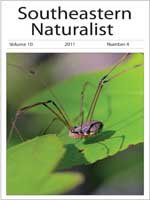Studies of local adaptation generally investigate plants growing in relatively stable habitats. We asked whether populations of the long-lived clonal grass Uniola paniculata (Sea Oats) are locally adapted to microhabitats in the southeastern US coastal dunes, a habitat characterized by dynamic environmental gradients spanning relatively small distances. Although vegetative zonation is well characterized across these gradients, little is known about intraspecific evolutionary responses of species spanning the gradients. Plants from the foredune and backdune areas of the gradient (<10 m and 40–60 m from the shoreline, respectively) were reciprocally transplanted into experimental plots in both habitats. Although foredune plots were washed away by storms before harvest, the foredune plants demonstrated no early advantage in stem diameter or height growth, and thus there was no support for local adaptation in foredune plants. In the backdune plots, the backdune plants demonstrated no early growth advantage, and additionally demonstrated no advantage in survival, nor in growth or total biomass of surviving plants at harvest. Thus, there was again no support for local adaptation. In frequently disturbed environments such as the coastal dunes, plants may be more likely to respond with phenotypic plasticity than through local adaptation.
How to translate text using browser tools
1 December 2011
No Evidence of Local Adaptation in Uniola paniculata L. (Poaceae), a Coastal Dune Grass
Cara L. Gormally,
Lisa A. Donovan
ACCESS THE FULL ARTICLE

Southeastern Naturalist
Vol. 10 • No. 4
December 2011
Vol. 10 • No. 4
December 2011




